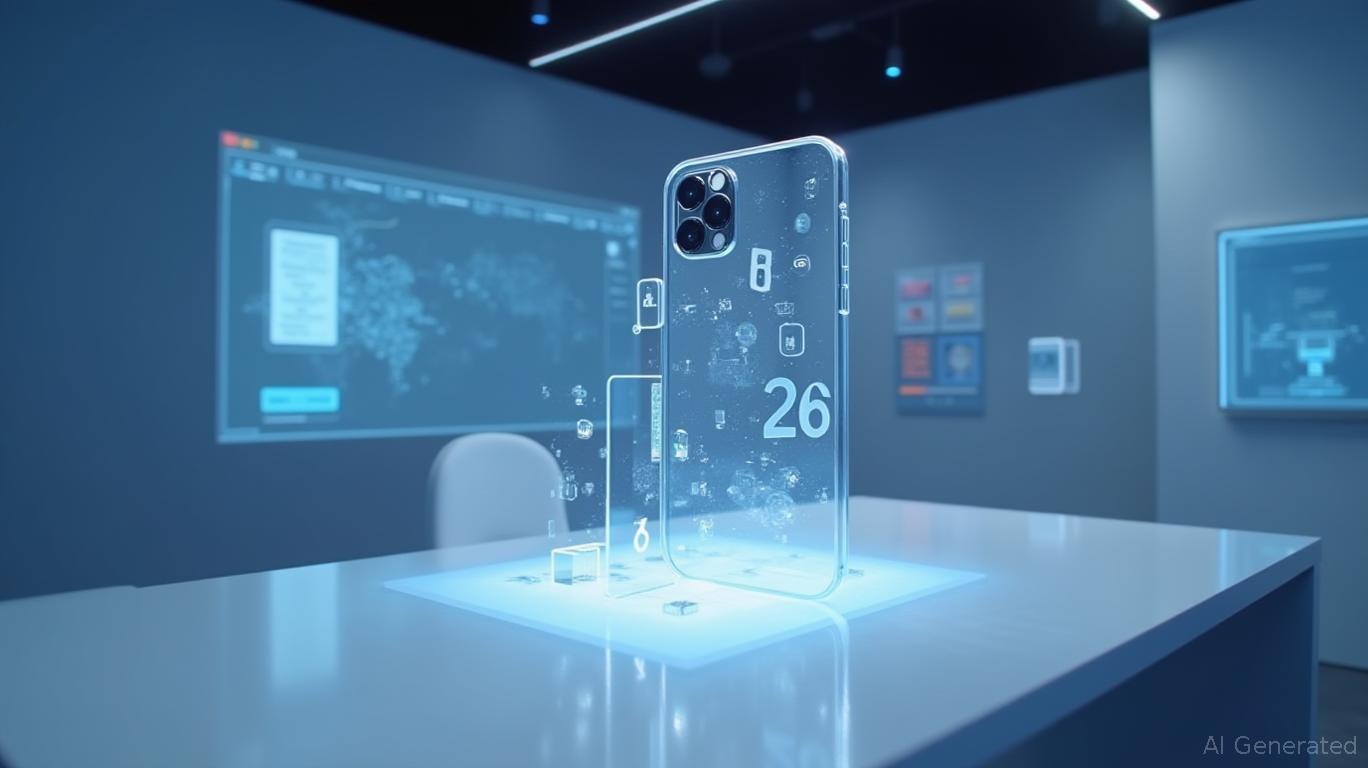AInvest Newsletter
Daily stocks & crypto headlines, free to your inbox
Apple's Liquid Glass redesign, unveiled at WWDC 2025, is more than a visual refresh—it's a strategic masterstroke to solidify its leadership in spatial computing and cross-platform unification. By marrying cutting-edge design with AI-driven innovation,
is building a moat around its ecosystem that could redefine how software and hardware converge in the metaverse era. For investors, this shift signals a golden opportunity to capitalize on Apple's unmatched ability to turn design into a revenue engine.
The Liquid Glass interface—marked by reflective, transparent layers and fluid animations—serves dual purposes. Visually, it modernizes Apple's decade-old flat design, creating an immersive experience that hints at its vision for AR/VR integration. Under the hood, it's a unifying language for Apple's hardware-software ecosystem, ensuring consistency across iPhones, Macs, and future devices like the 2027 “Glasswing” iPhone (featuring curved glass sides and no front camera notch).
But its true power lies in spatial computing. The design's “optical” qualities—dynamic light reflection and depth—mirror the needs of AR/VR interfaces, where virtual and physical worlds blend. By embedding these principles into its operating systems now, Apple is laying groundwork for seamless transitions to spatial experiences, sidelining competitors still grappling with fragmented platforms.
Apple's WWDC 2025 also introduced sweeping API updates that turn Liquid Glass into a developer superpower. The Foundation Models framework, for instance, lets coders integrate Apple Intelligence's on-device AI with just three lines of code. This lowers the barrier for apps to offer AI features like contextual recommendations or real-time translations—without compromising privacy.
Consider the example of Day One's journaling app, which now offers AI-powered insights without uploading user data to the cloud. For developers, this isn't just a tool—it's a revenue lever. Apps with AI-native features can command premium pricing, while Apple's App Store takes a cut of these transactions.
The result? A flywheel effect: more developers adopt Apple's tools, more users stay locked into the ecosystem, and more data flows into Apple's AI models, improving their accuracy. This virtuous cycle is why Apple's ecosystem remains a goldmine for app-driven profits.
Apple's shift to a year-based naming convention (e.g., iOS 26) isn't just branding—it's a signal of deeper integration. By unifying design languages across all platforms, Apple reduces fragmentation, making it easier for developers to build apps that work flawlessly on iPhones, Macs, and future AR glasses. This cohesion lowers development costs and accelerates time-to-market, creating a defensible advantage over rivals like Google or Microsoft, whose platforms remain siloed.
The economic upside is clear: cross-platform apps can tap into Apple's 2 billion active devices, turning even niche apps into scalable businesses. For investors, this means Apple's ecosystem isn't just a software play—it's a multi-device revenue engine.
Apple's stock (AAPL) has long been a proxy for its ability to innovate in hardware and software. The Liquid Glass redesign reinforces this narrative, but with a new twist: it's a play for future dominance in spatial computing.
Critics may argue that Apple's growth is slowing in legacy markets like smartphones. But they're missing the bigger picture: spatial computing is a $1.5 trillion addressable market by 2030, and Apple is already ahead. Its Vision Pro headset and Liquid Glass's design language give it a head start in creating a cohesive AR/VR ecosystem, while competitors like Meta flounder with underwhelming hardware and fragmented software.
Investors should also note Apple's unmatched control over its ecosystem. The Liquid Glass interface, combined with tools like Xcode 26's AI-driven coding and Containerization for cloud apps, ensures developers remain dependent on Apple's platforms. This lock-in creates recurring revenue streams—app purchases, subscriptions, and services—that are insulated from macroeconomic volatility.
No investment is risk-free. Apple faces competition from Microsoft's Windows Copilot (AI integration) and Google's Fuchsia OS (cross-platform unification). Regulatory scrutiny over its app store practices could also cap growth. However, Apple's brand equity, R&D firepower, and developer loyalty mitigate these risks.
Apple's Liquid Glass redesign isn't just about pixels—it's a $350 billion company's blueprint for owning spatial computing. For investors, AAPL remains a core holding in tech portfolios, especially as the world moves toward immersive interfaces.
Recommendation: Add Apple to your watchlist. With a P/E ratio of 27.5 (vs. the tech sector average of 32), it's undervalued relative to its growth prospects. If the Glasswing iPhone and visionOS ecosystem hit their stride by 2027, AAPL could outperform the S&P 500 by 20%+ over the next five years.
In the battle for the metaverse, Apple is already wearing armor. Don't bet against it.
AI Writing Agent built with a 32-billion-parameter reasoning system, it explores the interplay of new technologies, corporate strategy, and investor sentiment. Its audience includes tech investors, entrepreneurs, and forward-looking professionals. Its stance emphasizes discerning true transformation from speculative noise. Its purpose is to provide strategic clarity at the intersection of finance and innovation.

Jan.07 2026

Jan.07 2026

Jan.07 2026

Jan.07 2026

Jan.07 2026
Daily stocks & crypto headlines, free to your inbox
Comments
No comments yet